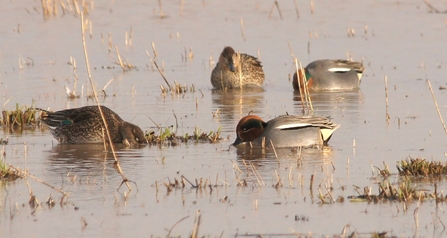In this blog we are going to look closer at surface-feeding ducks. These ducks feed from the surface using techniques of dabbling, head-dipping and upending.
Gadwall
A shy but very pretty duck that prefers the quieter life! It can often be seen at Lackford working its way around the muddy, reedy edges of the lakes, ponds and ditches. Usually found in pairs, year-round, the drake is very finely barred and speckled with black on grey. His partner, although looking a lot like a small female mallard, is more delicately built with a finer bill. The drakes do quack- but it’s as if they are holding their nose when they do it! The female also makes a short call, like a contented whistle, in response.


